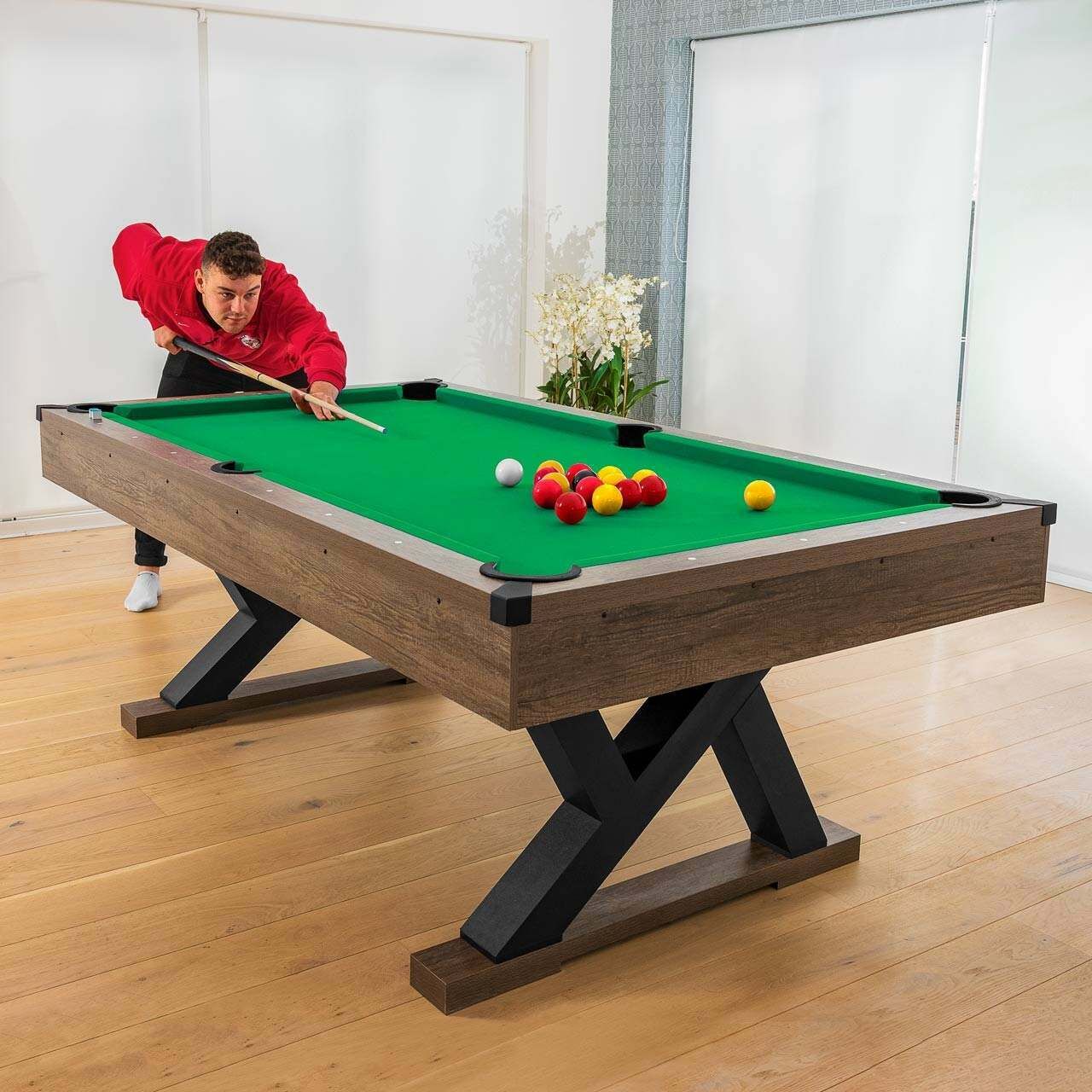Difference Between Snooker Table vs Pool Table is a topic that delves into the distinctions between two popular cue sports, snooker and pool, by comparing the tables used for each game. Both snooker and pool are enjoyed by players and enthusiasts around the world, but they have distinct characteristics that set them apart. This topic explores these differences comprehensively.
Snooker Table
- Size: 12 feet long by 6 feet wide
- Pockets: 6, smaller than pool table pockets
- Balls: 22, including 15 red balls, 6 colored balls (yellow, green, brown, blue, pink, and black), and 1 white cue ball
- Game: Snooker is a complex game with many different rules, but the basic goal is to score more points than your opponent by potting the balls in a specific order.
Pool Table
- Size: 9 feet long by 5 feet wide (standard size), but can also be 7 feet or 8 feet long
- Pockets: 6, larger than snooker table pockets
- Balls: 15, including 1 white cue ball and 14 colored balls (6 striped balls and 7 solid balls, plus a black 8-ball)
- Game: There are many different pool tables games, but the most common is 8-ball. The goal of 8-ball is to pot all of your balls (striped or solid), and then pot the 8-ball to win.
Differences Between Snooker Table vs Pool Table

- Snooker tables have a “D” on the head end of the table, which is used to mark the spot where the cue ball is placed at the start of the frame. Pool tables do not have this marking.
- Snooker tables have a slightly different type of cushion than pool tables. Snooker cushions are more resilient, which allows the balls to bounce more consistently.
- Snooker tables are typically more expensive than pool tables, due to their larger size and higher-quality construction.
Which Table is Right for You?
If you are looking for a challenging game that requires a high level of skill, then snooker is a good choice. However, snooker tables are larger and more expensive than pool tables.
If you are looking for a more casual game that is easier to learn, then pool is a good choice. Pool tables are also smaller and more affordable than snooker tables.
Ultimately, the best way to decide which table is right for you is to try both games and see which one you prefer.
A. Cue Sports Overview: Start by introducing cue sports, emphasizing their global popularity.
B. Importance of Understanding Differences: Explain why it’s crucial to understand the distinctions between snooker and pool tables, as it can affect gameplay, choice of equipment, and personal preferences.
Dimensions and Table Structure
A. Snooker Table Dimensions: Describe the specific dimensions of a snooker table, including length, width, height, and pocket size and placement.
B. Pool Table Dimensions: Explain the dimensions of a pool table, emphasizing any variations in size, height, and pocket size and placement compared to snooker tables.
Ball Sets
A. Snooker Ball Set: Detail the snooker ball set, including the number of balls, their colors, and any specific markings.
B. Pool Ball Set: Provide information about the pool ball set, including the number of balls, colors, and markings, if applicable.
Game Rules
A. Snooker Game Rules: Explain the rules of snooker, focusing on the game’s objective, scoring system, and any fouls or penalties.
B. Pool Game Rules: Describe the rules of pool, considering variations like 8-ball or 9-ball, covering the game’s objective, scoring, and rules regarding fouls and penalties.
Cue Sticks
A. Snooker Cue Sticks: Discuss the characteristics of cue sticks used in snooker, such as their length, weight, and tip size.
B. Pool Cue Sticks: Describe the features of cue sticks designed for pool, including length, weight, and tip size.
C. Comparing Cue Sticks: Highlight the distinctions in cue stick design for snooker and pool.
D. Contrasting Skill Sets: Compare and contrast the skill sets required for snooker and pool, emphasizing their unique demands.
Popularity and Cultural Differences
A. Regional Popularity of Snooker: Explain where snooker enjoys popularity, such as in the UK.
B. Regional Popularity of Pool: Discuss the regions where pool is more prevalent, such as the USA.
Maintenance and Cost
A. Maintenance Requirements: Outline the maintenance needs for both snooker and pool tables.
B. Cost Considerations: Discuss the costs associated with purchasing, maintaining, and accessorizing snooker and pool tables.
C. Long-term Affordability: Consider the long-term affordability and cost-effectiveness of each cue sport.
Conclusion
A. Recap of Differences: Summarize the key differences between snooker and pool tables.
B. Personal Preferences: Encourage readers to consider preferences and goals when choosing a table.
C. Significance: Reflect on the cultural and practical significance of snooker and pool tables in the world of cue sports.
This comprehensive exploration of the differences between snooker and pool tables will help readers gain a deep understanding of these two beloved cue sports and make informed choices which game to play or invest in.

